7 Hamilton Street, Saltcoats, North Ayrshire, KA21 5DS
The town of Saltcoats and this Wetherspoon pub take their name from the salt cots on the seashore, used for curing fish. Saltcoats originated from a small community living in huts on the seashore, earning a living by fishing or boiling seawater in small kettles or pans (salt ‘cots’), mainly for curing fish. These early origins are recalled in the Burgh of Saltcoats Seal which features a salt pan in its design.
A print and text about Alfred Nobel.
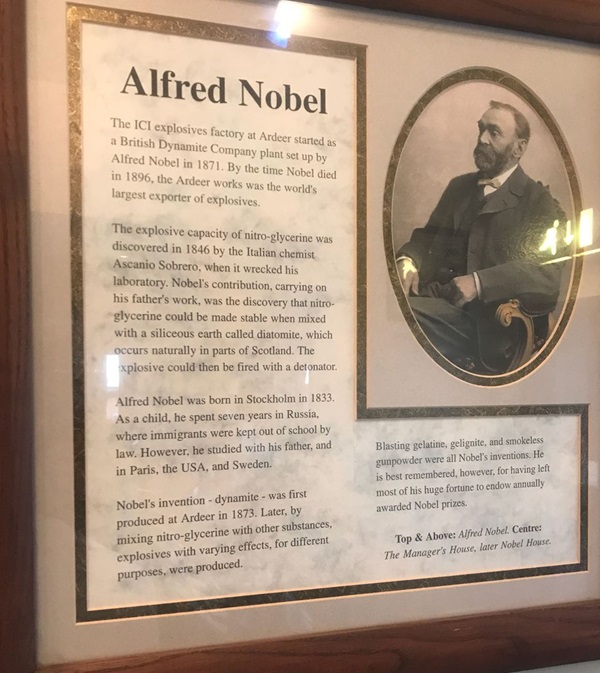
The text reads: The ICI explosives factory at Ardeer started as a British Dynamite Company plant set up by Alfred Nobel in 1871. By the time Nobel died in 1896, the Ardeer works was the world’s largest exporter of explosives.
The explosive capacity of nitro-glycerine was discovered in 1846 by the Italian chemist Ascanio Sobrero, when it wrecked his laboratory. Nobel’s contribution, carrying on his father’s work, was the discovery that nitro-glycerine could be made stable when mixed with a siliceous earth called diatomite, which occurs naturally in parts of Scotland. The explosive could then be fired with a detonator.
Alfred Nobel was born in Stockholm in 1833. As a child, he spent seven years in Russia, where immigrants were kept out of school by law. However, he studied with his father, in Paris, the USA, and Sweden.
Nobel’s invention – dynamite – was first produced at Ardeer in 1873. Later, by mixing nitro-glycerine with other substances, explosives with varying effects, for different purposes, were produced.
Blasting gelatine, gelignite, and smokeless gunpowder were all Nobel’s inventions. He is best remembered, however, for having most of his huge fortune to endow annually awarded Nobel prizes.
Top and above: Alfred Nobel
Centre: The Manager’s House, later Nobel House.
Text about the history of Saltcoats.
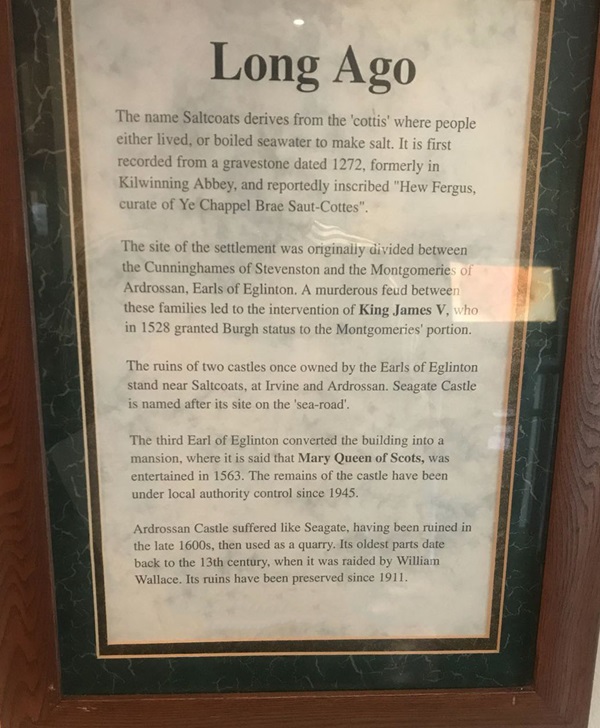
The text reads: The name Saltcoats derives from the ‘cottis’ where people either lived, or boiled seawater to make salt. It is first recorded from a gravestone dated 1272, formerly in Kilwinning Abbey, and reportedly inscribed “Hew Fergus, curate of Ye Chappel Brae Saut-Cottes”.
The site of the settlement was originally divided between the Cunninghames of Stevenson and the Montgomeries of Ardrossan, Earls of Eglington. A murderous feud between these families led to the intervention of King James V, who in 1528 granted Burgh status to the Montgomeries’ portion.
The ruins of two castles once owned by the Earls of Eglinton stand near Saltcoats, at Irvine and Ardrossan. Seagate Castle is named after its site on the sea road.
The third Earl of Eglinton converted the building into a mansion, where it is said that Mary Queen of Scots, was entertained in 1563. The remains of the castle have been under local authority control since 1945.
Ardrossan Castle suffered like Seagate, having been ruined in the late 1600s, then used as a quarry. Its oldest parts date back to the 13th century, when it was raided by William Wallace. Its ruins have been preserved since 1911.
Prints and text about Betsy Miller.
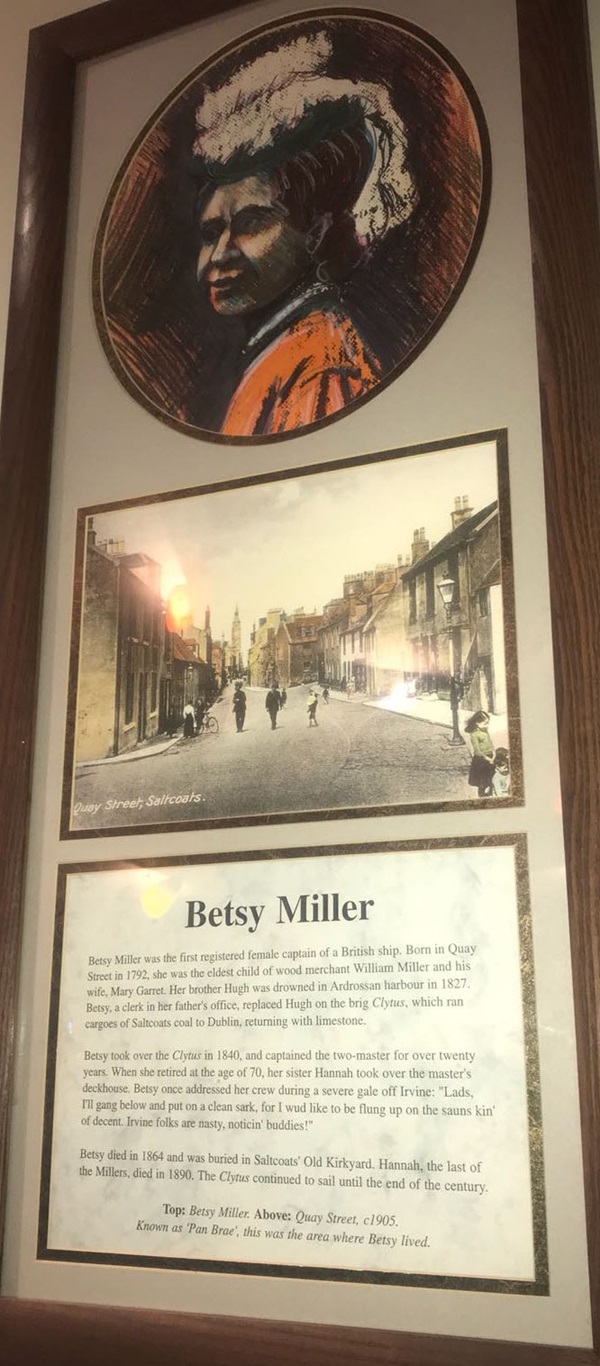
The text reads: Betsy Miller was the first registered female captain of a British ship. Born in Quay Street in 1792, she was the eldest child of wood merchant William Miller and his wife, Mary Garret. Her brother Hugh was drowned in Ardrossan harbour in 1827. Betsy, a clerk in her father’s office, replaced Hugh on the brig Clytus, which ran cargoes of Saltcoats coal to Dublin, returning with limestone.
Betsy took over the Clytus in 1840, and captained the two-master for over twenty years. When she retired at the age of 70, her sister Hannah took over the master’s deckhouse. Betsy once addressed her crew during a severe gale off Irvine: “Lads, I’ll gang below and put on a clean sark, for I wud like to be flung up on the sauns kin’ of decent. Irvine folks are nasty, noticin’ buddies!”
Betsy died in 1864 and was buried in Salcoats’ Old Kirkyard. Hannah, the last of the Millers, died in 1890. The Clytus continued to sail until the end of the century.
Top: Betsy Miller
Above: Quay Street, c1905. Known as Pan Brae, this was the area where Betsy lived.
A photograph of the esplanade, Saltcoats, c1907.
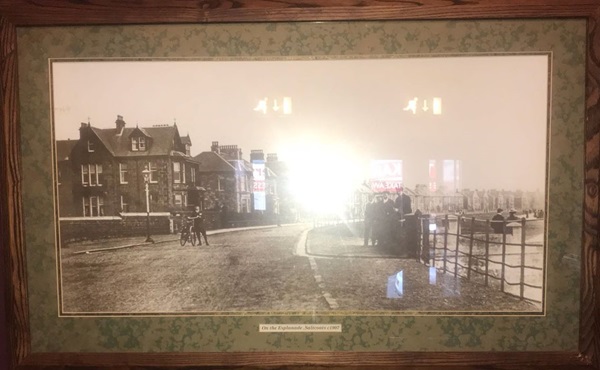
A photograph of the seashore at Saltcoats.
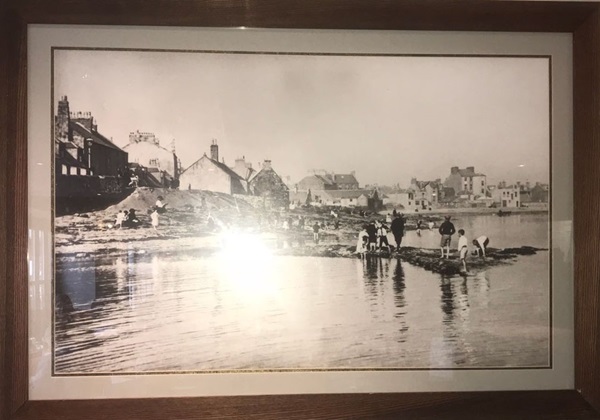
A photograph of La Scala, Saltcoats, 1924.
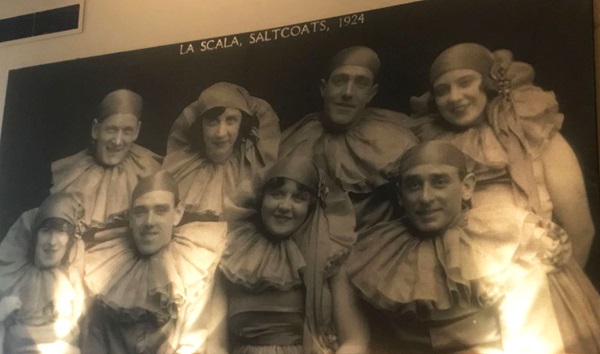
Photographs of La Scala Pierrots in 1923-24.
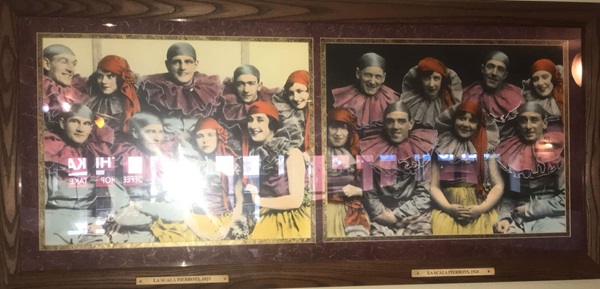
An illustration of La Scala, Milan.
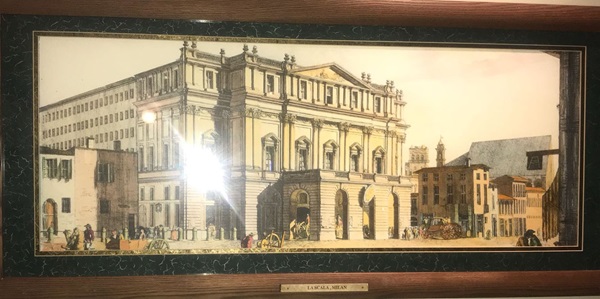
External photograph of the building – main entrance.
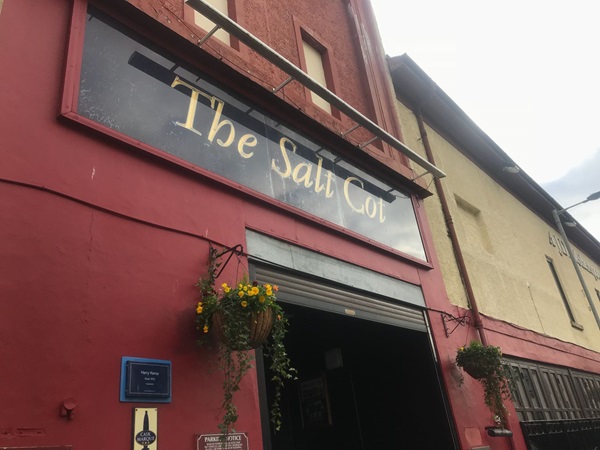
If you have information on the history of this pub, then we’d like you to share it with us. Please e-mail all information to: pubhistories@jdwetherspoon.co.uk